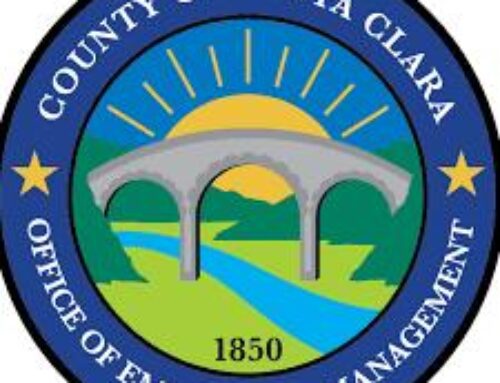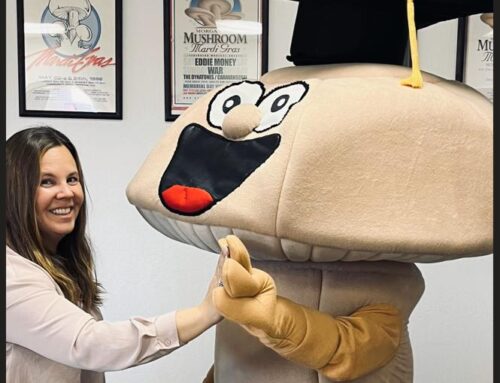Plan provides guidance on areas important to success
Published in the April 12 – April 25, 2017 issue of Morgan Hill Life
By Marty Cheek

Photo by Marty Cheek
Workers install a wall frame at downtown Morgan Hill’s Barley Place home development at the corner of Main Avenue and Depot Street.
With population growth and the need for Silicon Valley companies to expand into the South Valley in the next 10 to 20 years, Morgan Hill faces opportunities and challenges in the economic drivers that will impact the quality of life for its residents and the success of its local businesses. That’s why the city initiated an “Economic Blueprint” project to help local leaders be smart about how to plan for the city’s financial future in the near and long term.
For the past year, city staff held meetings with more than 400 leaders and businesses to develop the 50-page document now available on the city’s website. The Morgan Hill City Council will vote April 19 on this road-map to locally increase prosperity and job vitality during the next five years.
Receiving input from residents and businesses was vital in the development process of the document which, if approved, will provide guidance on how to enhance four areas important to Morgan Hill future economic success: innovation and advanced manufacturing, tourism, medical and retail industries.

Photo by Marty Cheek
The new development at the corner of Third Street and Monterey Road that will house four new restaurants is rising from the ground.
“We didn’t want to make this a City Hall document saying, this is what we’re going to do,” said the city’s Economic Development Director Edith Ramirez. “We wanted to find that common ground with the community and businesses and bring everyone to the party to see how we can make Morgan Hill economically viable in the long run.”
The city approached the project with the knowledge the General Plan’s three-year community conversation ended last year. It became foundational to the blueprint by providing four “pillars”: maintain the quality of life, fiscal sustainability, job growth and tourism, she said.
The business community appreciates the work the city did to add diverse viewpoints and bring to light the actions needed to provide more jobs and economic vitality to Morgan Hill, said John Horner CEO/president of the Morgan Hill Chamber of Commerce.

Increasing the number of jobs will mean fewer commuters congesting roads, a better life style for those who can work closer to home, and more money for the city’s coffers, he said.
“The emphasis in job growth as a key part of what we do in Morgan Hill is the most important part of the blueprint,” he said.
The blueprint shows advanced manufacturing is the leading industry in Morgan Hill, and Ramirez hears from local companies that they have a hard time attracting worker talent.

The document encourages the city not only to work to attract innovation and advanced manufacturing companies but to retain its current companies. Among the top employers in the city are Anritsu Company, which builds testing and measuring devices, with 477 workers, Specialized Bicycle Components with 400 workers, and Paramit, which builds medical devices and instrument manufacturing, with 320 workers.
Tourism is an expanding area for Morgan Hill, but it needs to be put into the context of the entire South Valley with partnership with Gilroy’s tourism efforts to really benefit the city economically, Ramirez said.
“Tourism is a very important industry for us in this community,” she said. “We have the wineries and farms and nearby lakes and parks and golf courses. And we have a base of visitors coming to our facilities such as the Outdoor Sports Center. We have an opportunity to take advantage of that. (The blueprint) recognizes we can’t do this alone. To really be successful and to do it right, this has to be a regional approach. And the opportunity is much greater with everybody at the table. We have been busy promoting the region by selling this image and this brand.”
The retail industry has historically been a challenging one for Morgan Hill, she said. The community is part of a larger trade area that includes South San Jose and Gilroy. Retailers often consider the proximity of Oakridge Mall and the Outlets in Gilroy. This dynamic competition for shoppers makes it harder to put stores in Morgan Hill. However, sport facilities such as the Outdoor Sports Center and the Aquatics Center bring in nearly one million tourists a year and have a potential to help promote sports-related stores locally. The development of downtown Morgan Hill as a food and wine destination can also benefit local retail, especially when the Granada Hotel opens in two years and draws visitors seeking a South Valley getaway.
The increasing number of homes being built downtown are also drawing more retail customers, attracting a younger crowd who seek to work in the local innovative industries and spend their dollars eating at quality restaurants and shopping at boutique stores.
“We know a downtown is a critical component for attracting jobs and attracting the creative young minds. People make choices on where they want to work based often on the amenities that are offered in that area,” Ramirez said. “Having a lively downtown is going to be attractive to those companies and those creative minds because they have a very active social life. The kind of housing we build and where we build it is also critical to attracting those creative minds because many times they don’t have the ability to afford a big home and they don’t even want it if they could.”






